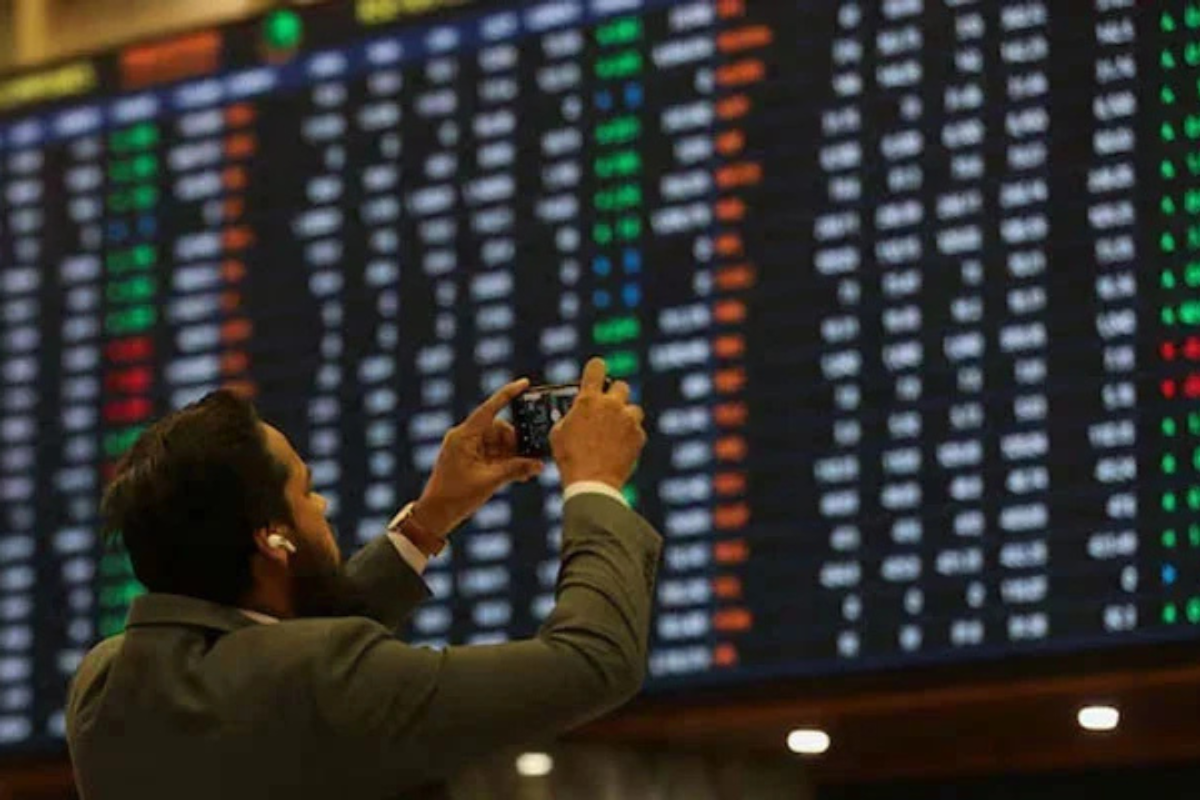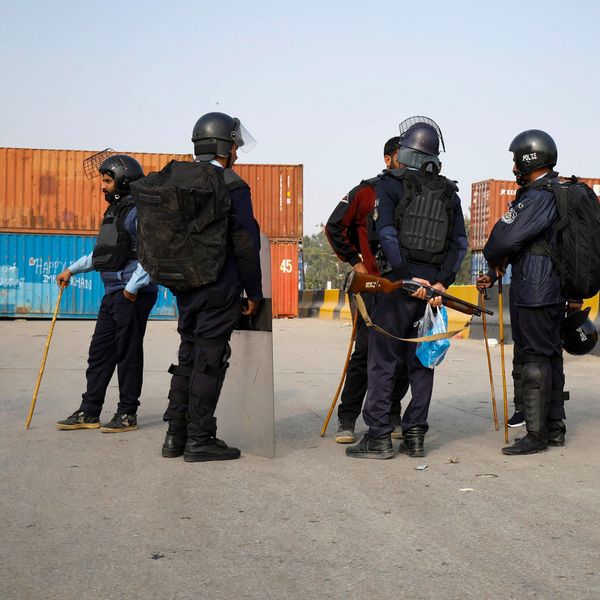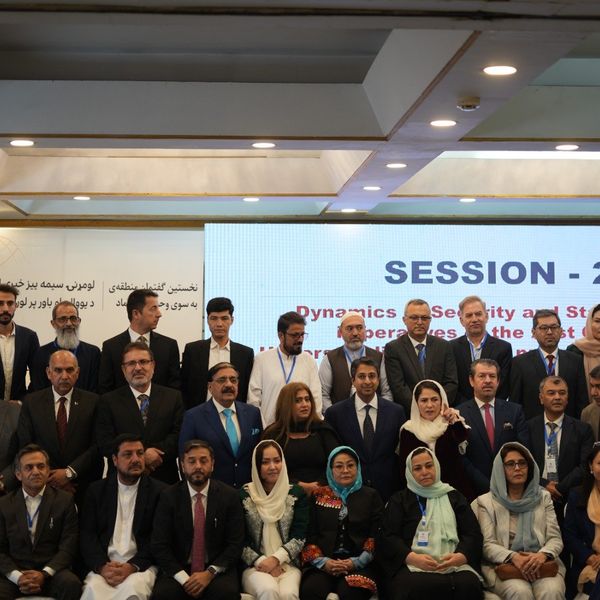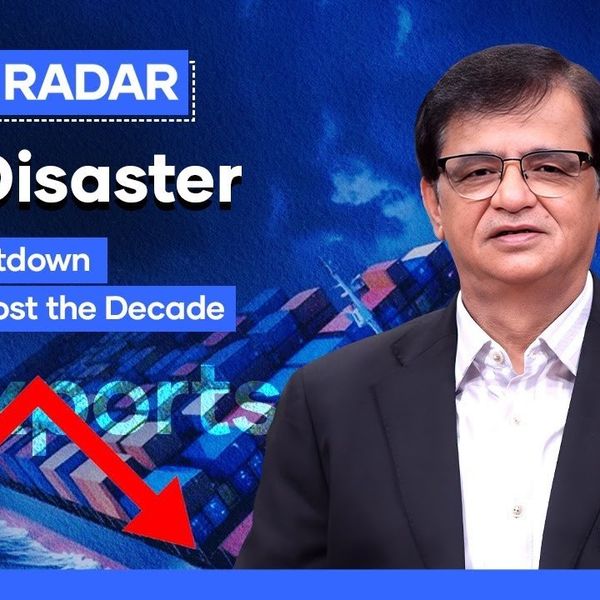Pakistan equities close week on high on back of PM’s US trip
Circular debt restructuring, expectations of Saudi business delegation's arrival raise hopes of prolonged bullish momentum
Business Desk
The Business Desk tracks economic trends, market movements, and business developments, offering analysis of both local and global financial news.

A man captures share prices on his phone during a trading session at the Pakistan Stock Exchange in Karachi
Pakistan Stock Market climbed to a record high during the preceding week, closing at an all-time high of 162,000 points on Prime Minister Shahbaz Sharif's diplomatic meetings in the USA and also with the IMF managing director.
The market remained positive throughout the week, closing at a record high of 162,257 points on Friday, posting a weekly gain of 4,220 points or 2.67%.
Bullish sentiment was supported by Prime Minister Sharif’s successful meetings with US President Donald Trump on Thursday, and the signing of a long-awaited PKR 1.2 trillion debt arrangement with banks to retire power sector circular debt.
Consequently, E&Ps and the power sector remain the highest contributors to the index, with 1,084 points and 888 points, respectively, along with commercial banks at 955 points.
Moreover, Pakistan is expecting a delegation of Saudi businesses in the coming days to explore bilateral trade opportunities following the recent strategic defense agreement.
The said positives boosted investor confidence, driving weekly market participation to an all-time high, with average traded volume increasing by 20% on a weekly basis to 2.2 billion shares.
Flow-wise, major net buying was recorded by mutual funds and individuals, with net buys of US$35.6 million and US$6.7 million, respectively.
On the other hand, banks and foreigners were major sellers with net sales of $15.8 million and $13.7 million, respectively.
According to an analyst from AKD Securities, the market is expected to remain positive in the coming weeks, with the upcoming IMF review remaining a key focus. The KSE-100 index is anticipated to sustain its upward trajectory, primarily driven by strong earnings in fertilizers, sustained ROEs in banks, and improving cash flows of E&Ps and OMCs, benefiting from falling interest rates and economic stability.
An analyst from Arif Habib Ltd. stated that the overall sentiment in the market remains positive, bolstered by the signing ceremony for the circular debt on Wednesday.
The market could see further positivity in the coming weeks when circular debt payments are disbursed.
The KSE-100 Index is currently trading at a forward P/E ratio of 8.52x (2026) against its 15-year average of 8.59x, offering a compelling dividend yield of 6.2% compared to the historical average of 6.13%.
According to an analyst of Spectrum Securities with index making new highs, propelled by rising prices of its constituent companies, the key thing to watch out for is valuations versus existing market prices.
The market, which was so obsessed with dividend yield, has started to look at companies beyond the yield story, with focus shifting to valuation, such as DCF, earnings multiple, price to sales, and price to book value.
There has been a significant re-rating of the market in terms of earnings multiples, with prices moving closer to double-digit or higher earnings multiples, and prices surpassing book values (particularly in the banking sector), as well as market caps exceeding annual sales/revenues, he said.
Despite heavy foreign selling and selling by domestic banks, the index has increased by almost 60% since May 2025 lows near 102,000, when Pakistan and India were involved in a days-long conflict.
Low interest rates and high taxes on fixed-income products/mutual funds/deposits have helped divert liquidity towards the equity market over the past three months.
Similarly, the availability of low-cost leverage, which has now exceeded PKR 100 billion, has also contributed to pushing prices higher.
After reaching 162,000, the next levels on the upside are 166,000-168,000 for the KSE-100 index, based on technical indicators.
On the downside, short-term support levels are 158,000 and 157,000. The 30DMA is now 157,234, with 100DMA at 153,668.










Comments
See what people are discussing